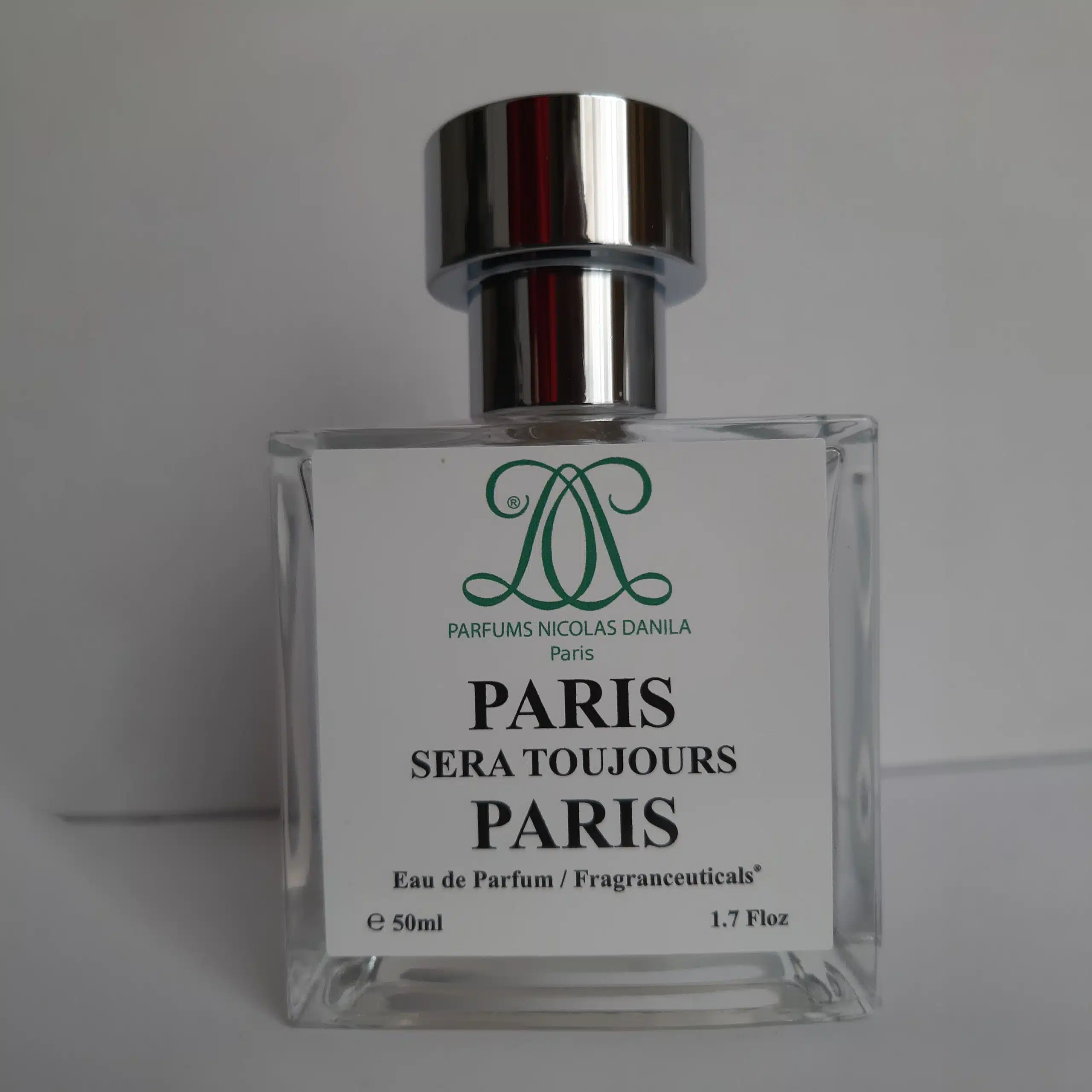Paris is unique. Paris is my village. “If you are lucky enough to have lived in Paris as a young man, then wherever you go for the rest of your life, it stays with you, for Paris is a moveable feast,” wrote Ernest Hemingway in *A Moveable Feast* in 1964. I had this luck, for the past 55 years (I arrived in Paris on January 13, 1969), and it feels like my duty to pay personal tribute to it. A unique perfume for this unique place in the world, for issue number 13 of this magazine.
As Maurice Chevalier sang in *Paris Will Always Be Paris*, and also in his song *Flower of Paris*, even in difficult times, Paris keeps hope for the return of brighter days.
The fleur-de-lis first appeared in the coat of arms of Paris in 1358 by order of the King of France, Charles V, following the revolt of Etienne Marcel. The king wanted to demonstrate the supremacy of the monarchy over the capital.
After the revolution, the three colors—blue, white, and red—appeared.
For our perfume, the blue was inspired by the bouquet of violets given to me, for free, by a young blonde girl with blue eyes on the day of an important chemistry exam to earn my Master’s degree at the Faculty of Sciences in Paris. The bouquet brought me great luck. May she be warmly thanked today.
For the white, it’s essential to use the lily (the rhizome), but above all, the mock orange, also known as the “poet’s jasmine,” which I encountered in Parc Montsouris and, even more often, in the gardens of the Cité Internationale Universitaire de Paris, close to the Monaco Foundation where I lived, and more recently in the square at Place Paul Painlevé, across from the Sorbonne. Next to the statue of Montaigne, whose toe one must touch for luck and happiness.
For the red, it recalls the blood spilled during the Revolution—not just the blue blood of the nobles but also the red blood of the revolutionaries who turned on each other, especially during the Reign of Terror. The May rose is certainly used, but its color and scent are too delicate to capture the red of our perfume. The scent of sweetbriar (Rosa Canina) reminds me of the heady fragrance of wild rose bushes at the edge of my childhood village. The intense scent of Damask rose is complemented by the red of geranium ivy on the balconies of Haussmann buildings.
This mysterious alchemy is at the origin of our perfume, *Paris Will Always Be Paris*, whose conception, creation, and presentation make me so proud.
But this alchemy alone is not enough to create a dream perfume. It’s necessary to translate into scent the emotions felt, and still felt, when one evokes Paris. The delicate memories of young love, the pride of living in a unique place, but also the stresses of academic and professional success. The fear of not being up to the challenge for such a project. Many times, I tried to leave Paris, sometimes with offers difficult to refuse, but each time, I returned. Elsewhere—in the United States, on the East Coast (in Cambridge, Massachusetts) or the West Coast (San Francisco), in Japan (especially Kyoto), or in Polynesia (Bora Bora or Moorea)—I missed the scent of Paris. I didn’t know how to describe it, but I missed it.
Once back, I rediscovered it. I was home. In my adult village facing my childhood village with my other olfactory memories of Paris.
It was then that I truly understood the expression *to have it under one’s skin*. For me, Paris is like a woman you have under your skin, even, and sometimes because of, her flaws.
I am happy to share this perfume with you, to help you discover Paris through scent. And I hope you will love it, just as I loved imagining it.

